Developing high-quality software on time can be a daunting task. There are various models on which to base the software development process. All of them demand a comprehensive and structured approach. To build successful digital products that provide value to users, development teams have to choose between these different software development methodologies to find the one that best suits the product and the company’s business goals.
In this article, we’ll explain the software development life cycle (SDLC) and help you choose the best SDLC methodologies for your project.
What is the software development life cycle?
The SDLC is a multistep process for building and delivering software. The process is used by development teams to create digital products with an acceptable level of bugs, within the desired timeline and with the identified resources. It’s a kind of optimization strategy that splits the overall business goal into smaller, feasible goals as a route to delivering the final outcome.
The SDLC defines and organizes the tasks that are necessary to facilitate and complete software development. Since the SDLC anticipates potential issues and bugs, it allows predicting the outcome of particular actions and preventing mistakes from occurring. The entire process involves both design and engineering work and requires smooth communication between team members.
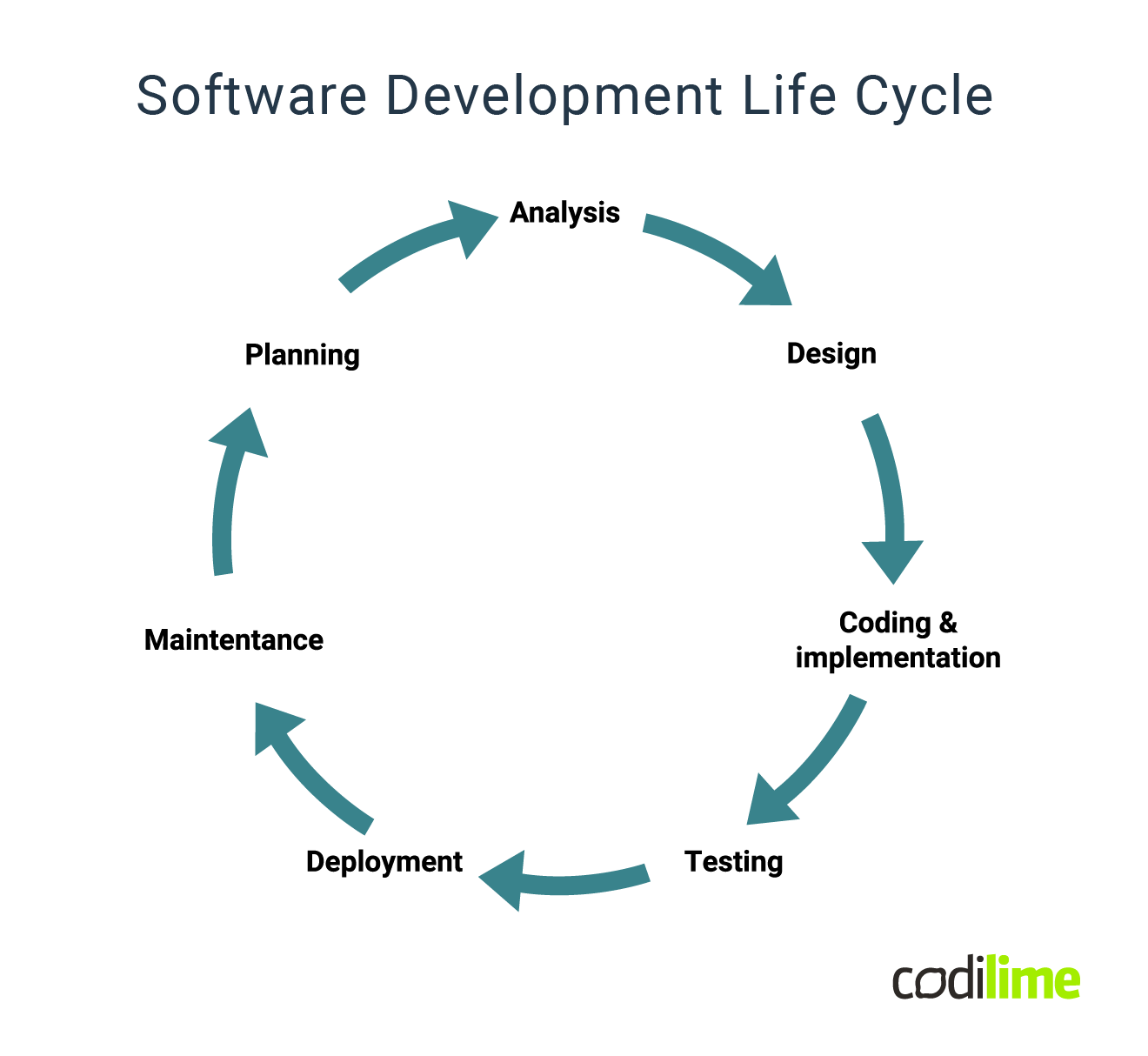
SDLC phases
The software development life cycle usually consists of six stages, often called ‘SDLC phases’:
- Planning – the stage where the software development process starts. In this phase, the project iteration is designed, and the risks associated with the project are identified. Planning also means asking questions about how the product will be used and what types of data are needed to build it. Most project managers consider planning the most important of the SDLC phases.
- Analysis – once you know the requirements, you need to analyze them for feasibility and validity. In the analysis phase, the development team decides if it’s possible to incorporate the requirements in the software. This is an essential part of requirement engineering.
- Design – this phase includes designing the specified requirements from the planning phase. The team creates the design system that is used to map out the required software, hardware, and system architecture.
- Development – this is where the actual software coding takes place. Thanks to the well-prepared design, the code can be generated without any hassle. The success of this phase depends on the developers – they follow the coding guidelines and use best practices to meet the project requirements.
- Testing - once the code is developed, software testing is carried out. This usually includes functional and non-functional tests.
- Deployment – once the product has been successfully tested, it’s time to deliver the software to the end-user or install it onto the customer’s system. After the software is deployed, beta testing is conducted to ensure any errors are reported and fixed.
- Maintenance – this phase deals with any problems experienced by the customers or end-users while using the product. Maintenance also includes handling all necessary updates.
Going through the above-mentioned SDLC phases differs depending on the chosen SDLC methodologies. However, all approaches have a common purpose: to help development teams deliver high-quality software quickly and cost-effectively.
Might interest you reading about >> Trunk-based development
Now, let’s dive deeper into the most popular SDLC methodologies.
The agile methodology
The agile methodology is an incremental and iterative approach that allows frequent changes in the project. The emphasis is mainly on flexibility and taking an adaptive approach while creating the software.
The agile model quickly became one of the most popular SDLC methodologies and an industry standard, sometimes even used in non-tech initiatives. The approach considers fast failure a good thing. It involves ongoing release cycles that consist of incremental changes from the previous release. Each iteration includes testing the product. The work is broken into segments called sprints. The agile model works great for projects that need flexibility and speed. Such projects are often found in startups and small organizations.
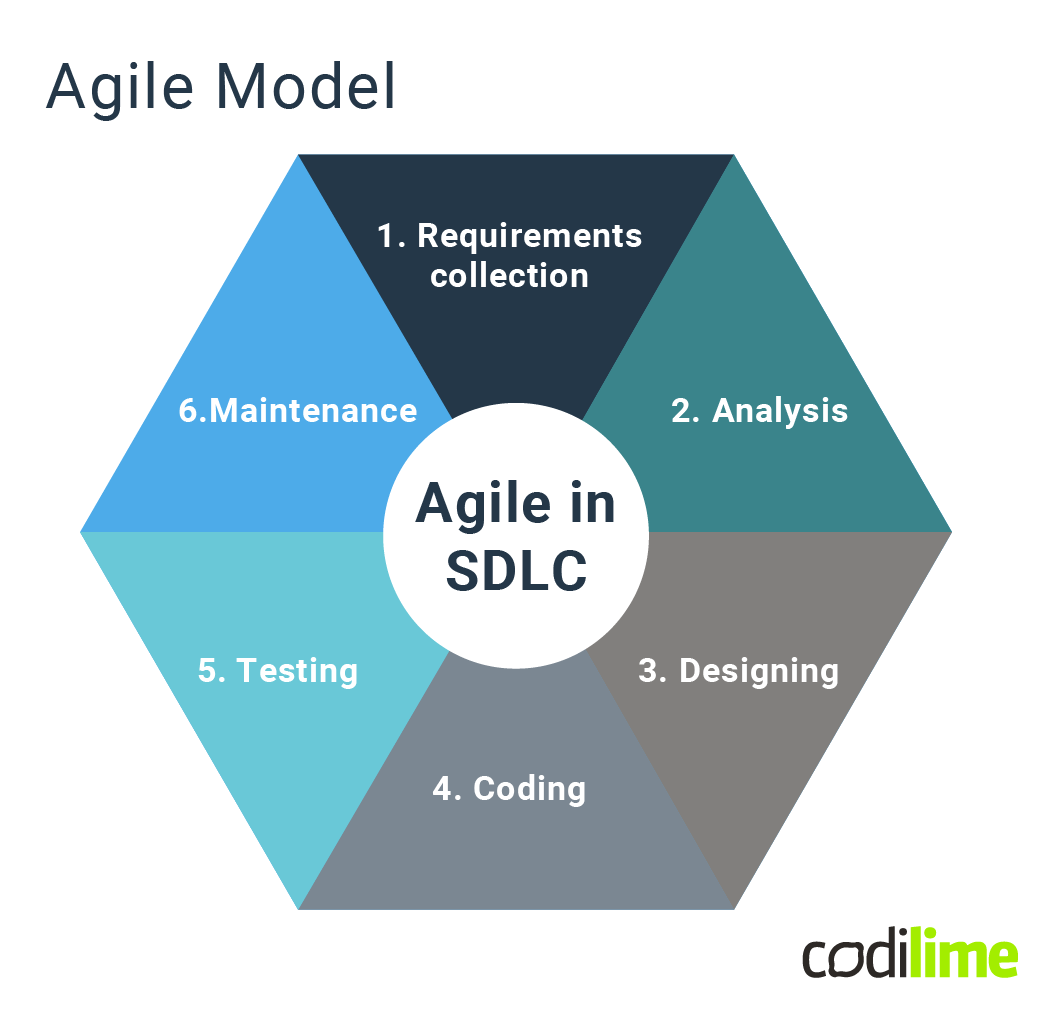
The key advantages of the agile model:
- It adapts to changes more quickly than other SDLC models. There’s a focus on flexibility.
- The software can be released to customers after every sprint cycle, which is beneficial for the customer. Customers can provide feedback instantly so that changes to the requirements can be added at the later stages of the software development process.
- There is constant collaboration between teams and stakeholders throughout the SDLC.
The key disadvantages of the agile model:
- It may be difficult to estimate the total time, cost, and resources required. In addition, it’s challenging to predict the final result.
- Documentation is kept to the bare minimum required by the development teams. It evolves with the project.
- The model needs experienced and highly skilled people.
The lean methodology
Lean software development is about working only on what must be worked on at the time. It’s interconnected with agile – they both focus on flexibility and speed. This SDLC methodology is inspired by lean manufacturing practices: waste elimination, amplifying learning, late decision making, team empowerment, fast delivery, built-in integrity, and viewing the application as a whole. As opposed to the agile model, the lean model emphasizes the elimination of waste as a way to build more value for customers.
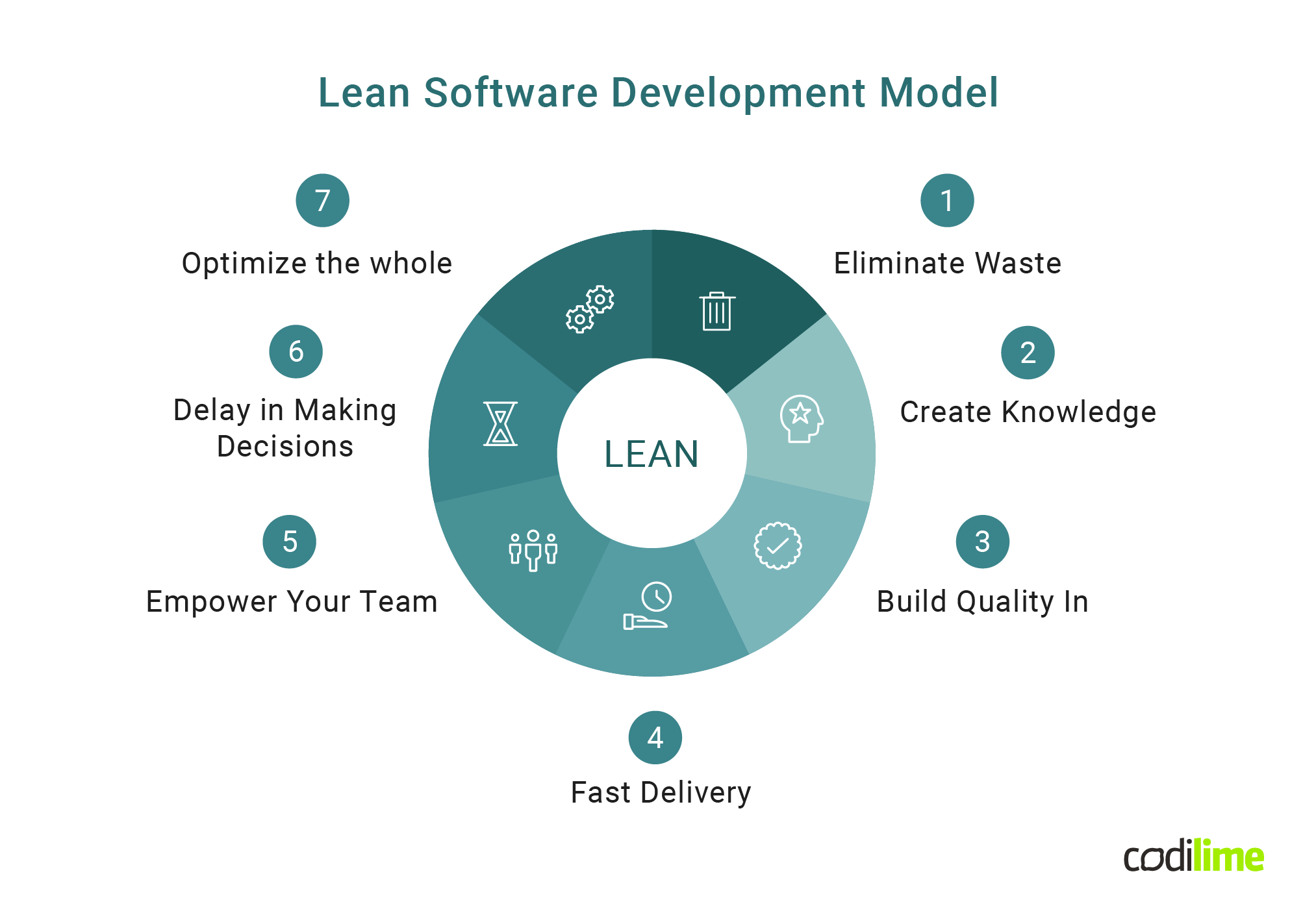
The key advantages of lean model:
- The model simplifies the software development process by removing unnecessary stages.
- It prioritizes essential functions so that developers spend less time on valueless builds.
- It delivers the product very early when compared to other methods.
The key disadvantages of lean model:
- The overall success strongly depends on the technical skills of team members.
- The model is not as scalable as others.
The iterative methodology
The iterative model puts emphasis on repetition. It evaluates the phases within the software development life cycle until the desired results are produced. This SDLC methodology is similar to the agile model except that there is less scope for external involvement.
The development team initializes the software requirements, then tests and evaluates them to establish any further requirements. Then, the design and implementation phases follow. A new version of the product is built with each iteration. Improvements are applied until the completed software is ready.
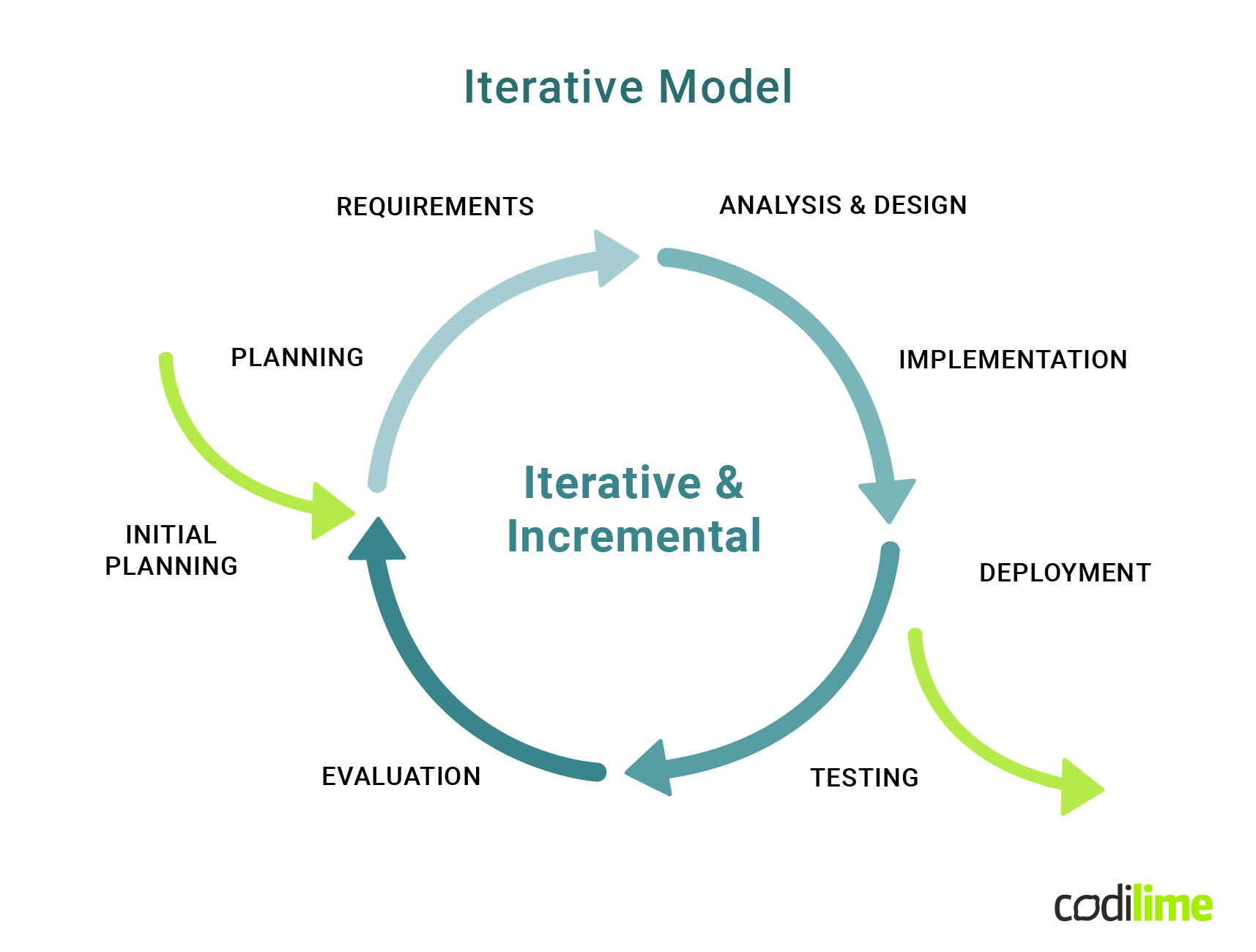
The key advantages of the iterative model:
- It’s easy (and less expensive) to implement changes.
- Mistakes and errors are detected early.
- A huge focus on testing and immediate modifications.
- Results are produced quickly and periodically.
- Product value is delivered in short time intervals
The key disadvantages of the iterative model:
- Repetitive processes can consume resources quickly.
- The end goal of the project may shift with each iteration.
The DevOps methodology
This is one of the newest methodologies. In this model, developers and operations teams collaborate closely to speed up innovation and the deployment of higher quality, as well as more reliable, software. The DevOps methodology’s main goal is to unite development and operations to streamline delivery and support. The model reduces the organizational risk and makes changes more fluid.
In the DevOps model, updates to products are small but frequent. It’s an entire philosophy that requires a non-traditional mindset in an organization.
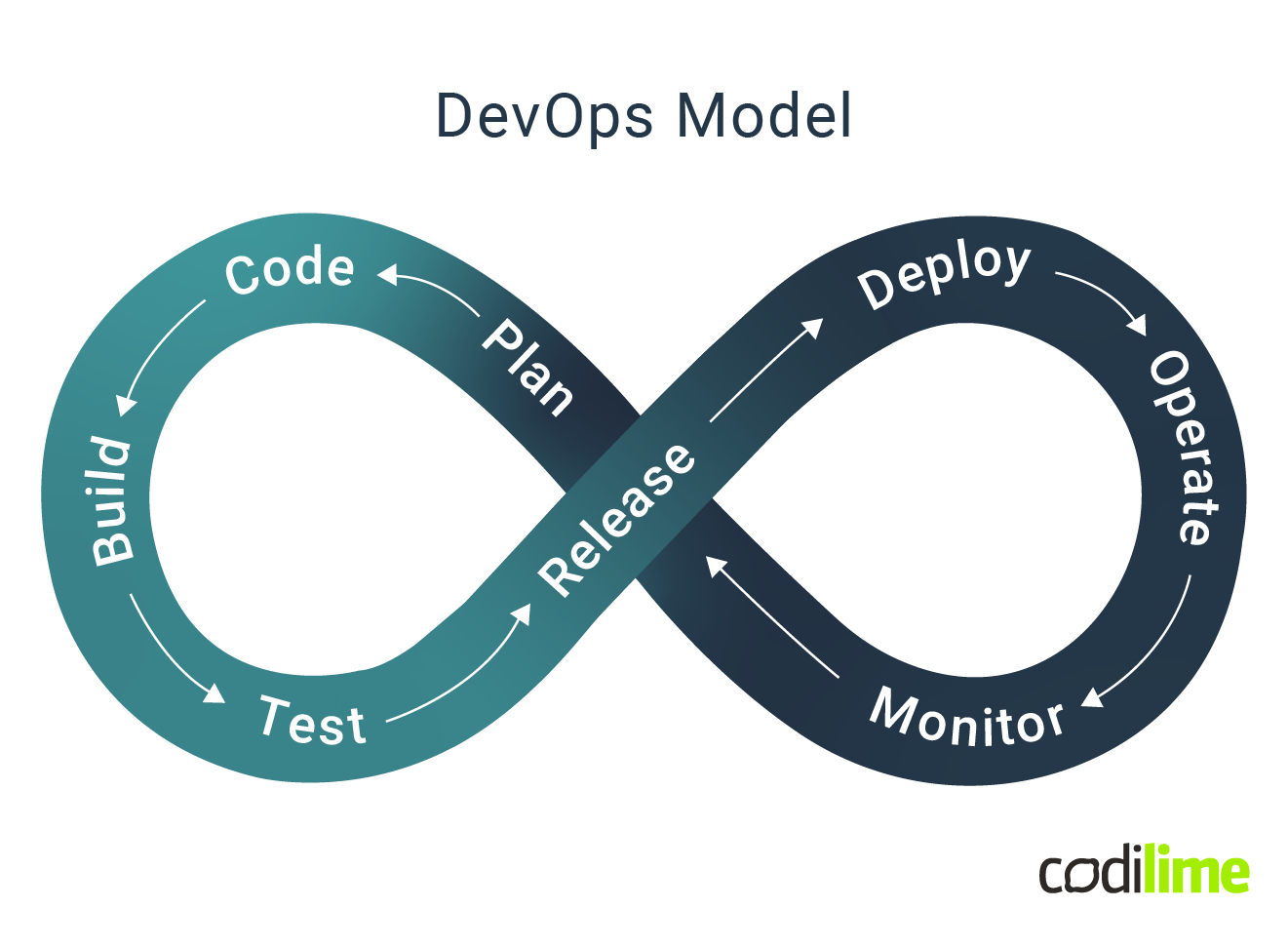
The key advantages of the DevOps model:
- It delivers fully-functional software within a short time.
- Cross-functional teams collaborate closely to ensure quick bug fixes at any stage of the development process.
- Workflow management is improved.
- The model enables the teams to build fully scalable and reliable applications.
The key disadvantages of the DevOps model::
- It requires experienced and skilled teams.
- The model often requires a huge investment (in both money and time).
-->> Learn more about DevOps.
The waterfall methodology
The waterfall model is the oldest SDLC methodology. It’s a simple and straightforward approach with a rigid structure that needs to be strictly followed: once a phase is finished, you move on to the next without going back.
The model is easy to understand and simple to manage but there is no room for revisions. Once a stage is completed, issues won’t be fixed until the maintenance stage starts. The waterfall methodology is also called the linear sequential model. This model is a strong solution for government contractors but not for projects that require flexibility in the long term.
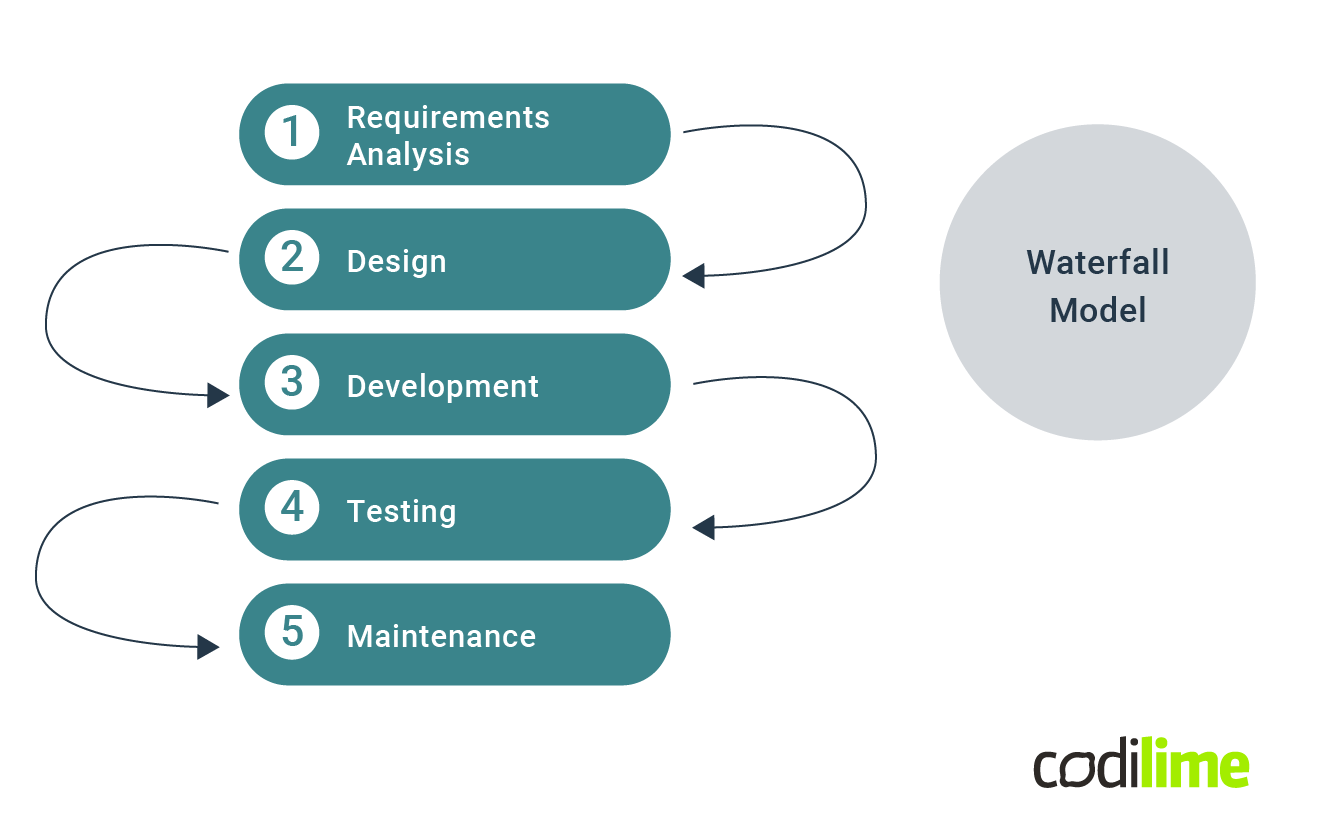
The key advantages of the waterfall model:
- It’s simple and intuitive.
- All the phases are done bit by bit.
- Design errors can be identified in the analysis and design stages.
- It’s easy to estimate the total cost.
- There is no complexity in execution.
The key disadvantages of the waterfall model:
- It only suits projects with clear and stable requirements.
- It’s time-consuming.
- Requirements cannot actually change.
- The planning phase is long and requires skilled professionals.
The prototyping methodology
In the prototyping model, development teams focus on building an early model of the software or application. A prototype is built before developing an actual, fully-functioning product. While a prototype is not fully functional or tested, it’s a great opportunity to get user feedback. The process of refining the prototype goes on until the customer is satisfied. Then, the actual product is built by using the prototype as a reference.

The key advantages of the prototyping model:
- It has a flexible design.
- The total cost and time are reduced since potential risks are identified in the prototype.
- Missing features or needed changes can be easily implemented while creating a refined prototype.
- The model ensures customer satisfaction.
The key disadvantages of the prototyping model:
- It’s easy for the customer to change the requirements of the end product.
- Documentation isn’t clear because requirements keep changing.
- The model can increase the complexity of the product.
The spiral methodology
The spiral model is one of the most flexible SDLC models. It’s very often chosen by organizations that aren’t sure about their requirements or modifications during the risk analysis.
The spiral model is similar to the iterative model – it passes through four stages (planning, risk analysis, development, and evaluation) that allow for multiple rounds of refinement. The spiral methodology mainly focuses on risk identification – potential risks are identified by developers and solutions are implemented to avoid and mitigate them.
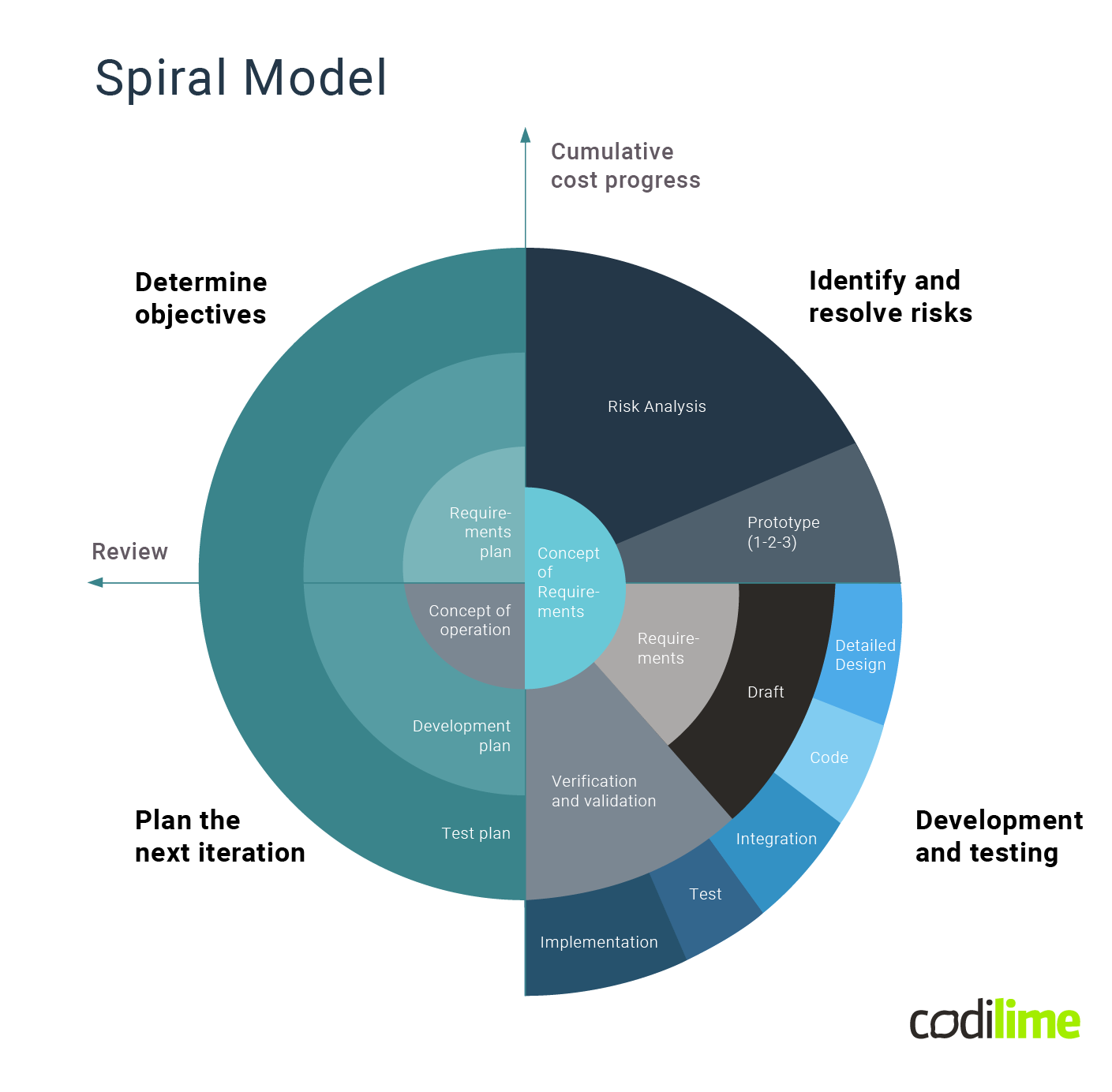
The key advantages of the spiral model:
- The spiral methodology perfectly suits large projects, especially those that require risk analysis and changes in requirements.
- End-users can see the product at the early stages.
- Thanks to the detailed analysis, risks are less likely to occur.
The key disadvantages of the spiral model:
- The model may seem to be complicated.
- It’s not suitable for small and simple projects.
- Sometimes, it takes time to reach the final product, especially when there are many iterations.
Summary – which SDLC methodology to choose?
There is no one perfect solution that fits all projects and all organizations. If you are wondering which SDLC methodology would be the best match for your project, start with assembling a team that will be able to solve problems under any method. Then, think about the end goal (e.g. if cutting costs is your priority, you may consider the lean model, if you’re aiming at testing the product thoroughly, you may choose the iterative methodology). You can also trust an expert to guide you through the entire SDLC process.








